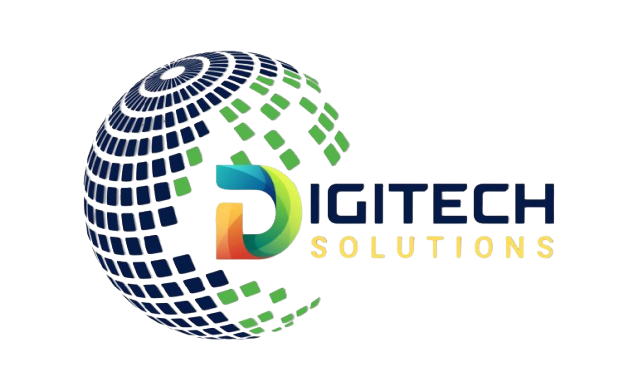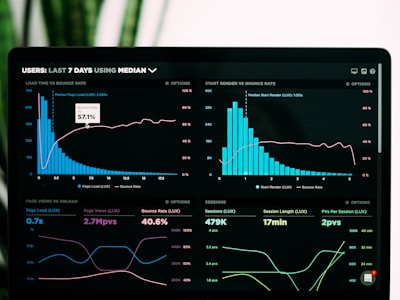Our Core Digital Marketing Services
Comprehensive solutions tailored for your growth
Search Engine Optimization (SEO)
Boost your website’s visibility on search engines through keyword optimization, on-page and off-page SEO, technical improvements, and high-quality link building, driving organic traffic and enhancing your online presence for better rankings and business growth.
Read MoreSocial Media Marketing (SMM)
Engage your audience and grow your brand on platforms like Facebook, Instagram, and LinkedIn through creative posts, targeted ads, and community management, fostering brand awareness, customer loyalty, and increased conversions.
Read MoreContent Marketing
Create valuable and relevant content—blogs, articles, videos, and infographics—to educate and engage your audience, improve SEO, build trust, and drive consistent traffic, ultimately turning visitors into loyal customers.
Read MoreGoogle Ads PPC
Run targeted pay-per-click campaigns on Google to reach potential customers instantly, increase website traffic, generate leads, and maximize ROI through keyword targeting, ad optimization, and performance tracking.
Read MoreEmail Marketing
Connect directly with your audience through personalized email campaigns, newsletters, and promotional offers, nurturing leads, boosting engagement, driving sales, and maintaining strong customer relationships.
Read MoreSMS Marketing
Send timely, concise, and personalized messages to your audience via SMS, promoting offers, reminders, and updates to increase engagement, drive instant action, and strengthen customer retention.
Read MoreGoogle My Business (GMB)
Optimize your Google My Business profile to enhance local search visibility, attract nearby customers, showcase your business info, reviews, and posts, and boost trust and local engagement for better footfall and online recognition.
Read MoreWebsite Development
Design and develop responsive, user-friendly websites that reflect your brand, provide seamless navigation, fast loading speeds, and optimized performance to attract, engage, and convert visitors into loyal customers.
Read MoreE-Commerce Development
Build robust, secure, and scalable online stores with easy product management, payment gateways, and shopping cart functionality to provide a smooth shopping experience and boost online sales.
Read MoreMobile App Development
Create intuitive, high-performance mobile applications for Android and iOS platforms, delivering seamless user experiences, engaging features, and reliable functionality to help your business connect with customers on the go.
Read MoreCMS Development
Develop customizable Content Management Systems that allow easy website updates, content publishing, and workflow management without technical expertise, enabling businesses to maintain dynamic and engaging digital platforms efficiently.
Read MoreBranding Collaterals
Design comprehensive branding materials, including business cards, letterheads, banners, and promotional items, to create a consistent brand identity that leaves a lasting impression and strengthens your business presence.
Read MoreVideo Production
Produce high-quality videos, from concept and scripting to shooting and editing, to engage audiences, showcase your brand story, promote products, and drive higher engagement across digital and social platforms.
Read MoreBrand Name
Craft unique, memorable, and impactful brand names that resonate with your target audience, reflect your business values, and help establish a strong identity in the competitive market.
Read MoreLogo Design
Create distinctive and professional logos that visually represent your brand, communicate your values, and leave a lasting impression, enhancing recognition and trust among your audience.
Read MoreBrochure Design
Design visually appealing and informative brochures that effectively communicate your products, services, and brand message, helping you engage potential customers and drive business growth.
Read MoreManufacturing
Support manufacturing businesses with tailored digital solutions, from website development and SEO to marketing campaigns, helping boost brand visibility, streamline operations, and reach clients effectively in a competitive industrial market.
Read MoreReal Estate
Offer real estate businesses modern digital solutions, including property websites, virtual tours, and targeted marketing, to attract buyers, generate leads, and showcase properties effectively in a competitive market.
Read MoreE-Commerce
Support online retail businesses with e-commerce development, digital marketing, and app solutions to drive sales, optimize customer experience, and increase visibility across search engines and social media platforms.
Read MoreHospital / Healthcare
Provide hospitals and healthcare providers with websites, patient portals, and digital marketing strategies to improve visibility, streamline patient engagement, and promote healthcare services effectively.
Read MoreWhy Choose Our Digital Marketing Agency in Pune?
Experience excellence with a team that puts your growth first.
Result-Driven Strategies
We create custom strategies focused on delivering real business results—increased leads, more website traffic, and maximum return on investment.
Local Pune Expertise
Our Pune-based team understands the local market, trends, and audience behavior—helping your brand grow faster in the region.
Full-Suite Digital Services
From SEO to cinematography and app development, we offer all digital services under one roof for complete online growth.
Creative + Technical Team
Our expert team combines creativity and technology to design engaging campaigns that attract, inspire, and convert your ideal audience.
Transparent Reporting
We provide clear, consistent reports with detailed insights, so you always understand how your digital marketing campaigns are performing.
Customized Growth Plans
No two businesses are alike. We craft digital strategies tailored to your goals, target audience, and available marketing budget.
Strong Portfolio & Client Trust
Trusted by businesses across India, our proven results and long-term partnerships showcase the trust we’ve built over time.
Affordable Yet powerful.
We offer affordable digital marketing services that deliver powerful results—ideal for startups, small businesses, and growing enterprises alike.
What Our Clients Say About Us
Trusted by businesses across industries
Rohit Sharma
Real Estate
Dr. Anjali Patil
Hospital
Rajeev Menon
Logistics Company
Megha Jain
Skincare Brand
Priya Desai
E-commerce Store
Rohit Sharma
Real Estate
Frequently
Asked
Questions
Get the answers you need to make an informed decision about your digital growth.
Get in touch



